New Amazon research - How to assess people’s impact on nature?
Project & Pod News / 11 November 2016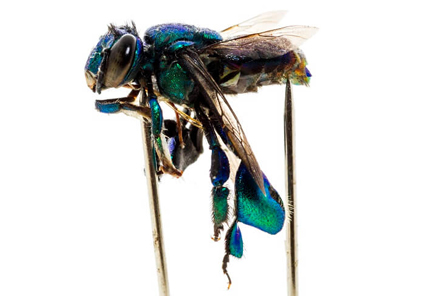
New research by the Amazon Conservation team in Peru looks at ways of assessing the health and value of regenerating forest for a detailed understanding of how human activities impact biodiversity and ecosystem function.
Across the world, the majority of tropical forests have been negatively affected by people – whether it’s through clear cutting to make way for agriculture, or selective logging for high value timber. Understanding how different levels of human disturbance impact a forest’s health, function and biodiversity value is key to planning conservation strategies and protecting the natural resources that local people depend on.
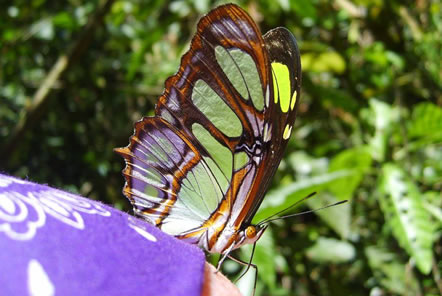
Amazingly, tiny insects – like orchid bees, dung beetles and butterflies – can help answer crucial questions about this issue. This is precisely why Laura, a PhD researcher at the University of Glasgow and a Ecosystem Research Coordinator, who is based at the Amazon Conservation project is studying these groups. Her aim is to better understand how the insects perform as indicators of the ecosystem health and biodiversity value of different habitat types.
Laura is carrying out her research at the project base in the Amazon rainforest of south-eastern Peru, by comparing the abundance, diversity and function of these insect groups within different types of habitats. These habitats range from intensively farmed banana plantations to minimally disturbed forest. Volunteers help to collect specific data and play a key role in the Amazon Conservation project.
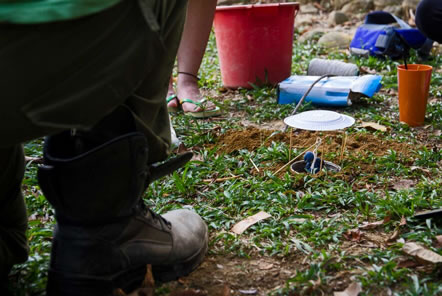
Beetle traps help Laura and volunteers collect data to better understand how these insects perform as indicators of the ecosystem health. She is using innovative methods to collect and analyse the data, such as employing soundscape ecology and adopting novel ways of measuring biodiversity.
“I’m using these new measures to quantify the amount of biodiversity present, as they give greater insight into the patterns of diversity and produce results that are more comprehensive than traditional diversity measures”, said Laura. “For example, rather than just accounting for the number of species found in a habitat, you can examine the relative contributions of rare and common species, and how much taxonomic of functional diversity is present.”
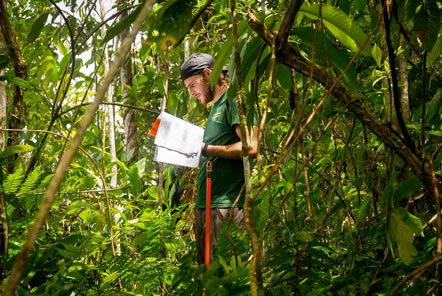
For instance, two patches of forest may have a similar number of bird species, but in one area they may almost all be seed eaters, whereas the second patch may have a mix of seed, insect and fruit eating species, and so provide a wider range of functions in the ecosystem.
“These extra details help to explain why you’re seeing particular patterns of biodiversity”, explained Laura, “and what aspects might be important to consider for conservation purposes.”
The aim is to measure how biodiversity relates to some of the ecosystem functions provided by the insect groups – this includes nutrient cycling, seed dispersal and pollination. This will enable Laura to assess the health of the various habitat types and how effective they are at recovering from human disturbance.
“If all the different species interactions are being performed efficiently”, explained Laura, “then the forest should be quite robust to disturbance.”
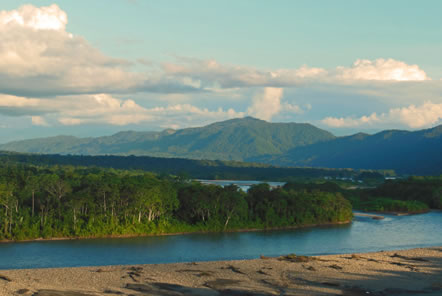
For example, as long as plants are getting effectively pollinated, nutrient cycling is working well, and the food web is in balance then the forest should be in a good state to recover from small disturbances, such as tree falls and storms.
“If there are enough connections in the system,” said Laura, “then if a few links are temporarily broken the forest should still be able to restore itself because there is plenty of redundancy. But we believe that there is a threshold that a forest reaches, where it’s lost too much diversity and so then it starts to lose all these functions as well, making it much harder for the forest to bounce back.”
Understanding the relationship between human disturbance, biodiversity and ecosystem functions is important both for the regeneration and conservation of tropical forest, but also for the local people who benefit from the ecosystem services provided by wildlife.
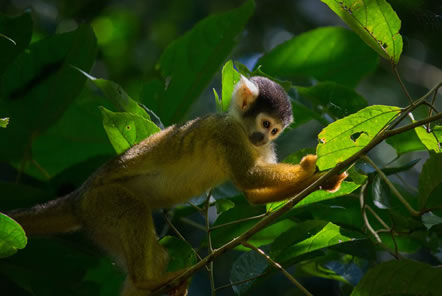
Research like Laura’s is invaluable, enabling the Amazon Conservation team and other environmental groups across the world to make more informed decisions and effective plans as we try and balance the needs of nature and people.
You can find out more how volunteers can help support the research at the Amazon Conservation project in Peru here: https://www.podvolunteer.org/projects/amazon-conservation-peru







